Dyer (Destroyer No. 84)
1918-1936
Nehemiah Mayo Dyer -- born on 19 February 1839 in Provincetown, Mass. -- to Henry and Sally (Mayo) Dyer. He was educated in the public schools and later went to sea (1854-1861). With the outbreak of the Civil War, he enlisted in the 13th Massachusetts Volunteer Infantry Regiment in July 1861. He transferred to the Volunteer Navy as an acting master's mate on 4 April 1862. He served at the Charlestown [later Boston] (Mass.) Navy Yard (1862-1863) and on board the captured Confederate schooner Eugenie (1863-1864). During this latter period, on 18 May 1863, he garnered promotion to the rank of acting ensign for gallant service.
Dyer was then assigned to the wooden sidewheel steamer Metacomet later in 1864. Commanded by Cmdr. James E. Jouett, the ship was part of Rear Adm. David G. Farragut’s West Gulf Blockading Squadron. On 30 June 1864, Dyer was in command of the captured blockade runner Glasgow when she forced Ivanhoe, the blockade runner, to run aground near Fort Morgan, Ala., in Mobile Bay. Because the steamer was protected by the fort's guns, Rear Adm. Farragut attempted at first to destroy her by long-range fire from Metacomet and the barkentine-rigged screw sloop-of-war Monongahela. When this proved unsuccessful, Farragut authorized his flag lieutenant, J. Crittenden Watson, to lead a boat expedition to burn Ivanhoe. Under the cover of darkness and the ready guns on board Metacomet and the gunboat Kennebec, Watson led four boats directly to the grounded steamer and fired her in two places shortly after midnight 6 July. Mayo was promoted to acting master for gallant service on board Metacomet during the Battle of Mobile Bay (4-5 August).
At war’s end, Dyer joined the Massachusetts Commandery of the Military Order of the Loyal Legion of the United States and was assigned insignia number 8854. In April 1866 Dyer received orders to report to the Bureau of Navigation in Washington, D.C., and remained there on special duty until May 1868. On 12 March 1868, he was promoted to lieutenant, and on 27 August transferred to the steam sloop Dacotah at Valparaiso, Chile. He was promoted to lieutenant commander on 28 December 1868, and later commanded the sloop-of-war Cyane at Sitka, Alaska (September 1869-March 1870). He then joined the screw steamer Pensacola at San Francisco, Calif., and was soon transferred to the screw sloop-of-war Ossipee with which he cruised to Baja California and other points along the Mexican coast. He received a medal from the Massachusetts Humane Society for his actions during a gale in the Pacific, when he jump into the water to save the life of a sailor washed overboard.
Dyer, in September 1870, was ordered to the South Pacific station and then was sent home on 22 August 1871. In October 1871, he was assigned to the Charlestown Navy Yard. After two years, he took command of the torpedo boat Mayflower at Norfolk, Va., on 24 November 1873, and then on 10 April 1874, he was transferred to the iron-hulled screw tug USS Pinta. In February 1876, Dyer was ordered to serve as executive officer of the receiving ship New Hampshire, fitting out at Norfolk, to be the permanent flagship at Port Royal, S.C. A few months later, he was assigned to equipment duty at the Charlestown Navy Yard, and in 1879, was transferred to the receiving ship Wabash. In 1881, he joined the screw frigate Tennessee and later in 1883, he became a lighthouse inspector, and in the same year was promoted to the rank of commander. He commanded the sloop-of-war Marion on the Asiatic station from 1887 to 1890.
Dyer then served at the Portsmouth (N.H.) Navy Yard from 1890 to 1893 and was later placed on special duty (1893-1894). He returned to the Boston Navy Yard (1895-1896) and served as Lighthouse Inspector for the First Lighthouse District at Portland, Maine, (1896-1897). Promoted to captain on 13 July 1897, he received orders to command the cruiser Philadelphia (Cruiser No. 4) in the Pacific Squadron. While with his ship at Mare Island, Calif., on 31 August 1897, he was detached and ordered to command the cruiser Baltimore (Cruiser No. 3). Assuming command of the vessel, he steamed to Honolulu, Oahu, Hawaiian Islands, and then on to the British Crown Colony of Hong Kong. Upon her arrival, Baltimore became part of the Asiatic Squadron under Commodore George Dewey. Dyer commanded Baltimore at the Battle of Manila Bay on 1 May 1898. For his conspicuous conduct in the destruction of Contraalmirante Patricio Montojo y Pasarón’s squadron, he was advanced seven numbers in the merit list. The Baltimore (Md.) city council also presented him with an elaborate sword for his meritorious service at Manila Bay.
Upon his promotion to rear admiral, Dyer was assigned as Commandant, Boston Navy Yard (1900-1901. He reached the mandatory retirement age of 62 on 19 February 1901. In retirement, he served as chairman of the Board of Commissioners of the Massachusetts Nautical Training School, forerunner of the Massachusetts Maritime Academy (1903-1904).
Rear Adm. Dyer died in Melrose, Mass., on 28 January 1910. He was buried at Wyoming Cemetery in Melrose.
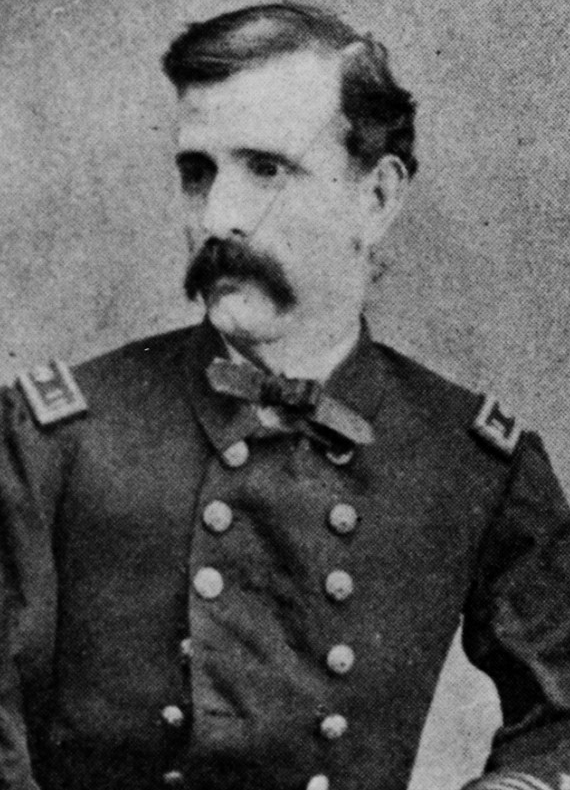
(Destroyer No. 84: displacement 1,060; length 315'5"; beam 31'8"; draft 8'6"; speed 35 knots; complement 100; armament 4 4-inch, 12 21-inch torpedo tubes; class Wickes)
Dyer (Destroyer No. 84) was laid down on 27 September 1917, at Quincy, Mass., by the Fore River Shipbuilding Corp.; launched on 13 April 1918; sponsored by Miss Virginia Blackmur; and commissioned at the Boston Navy Yard, on 1 July 1918, Cmdr. Fred H. Poteet in command.
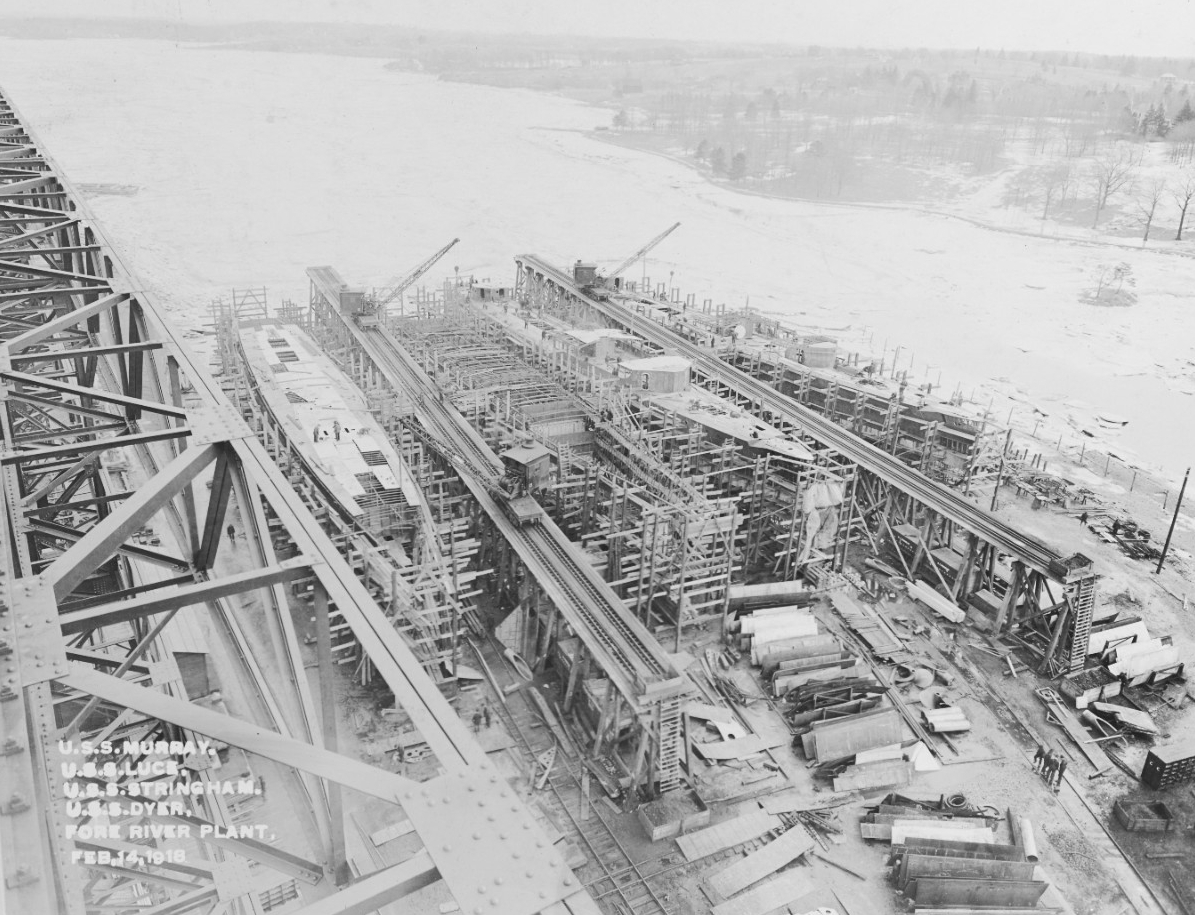
Prior to delivery to the Navy and her commissioning, Dyer underwent standardization trials in June off New England. Assigned to Commander, Patrol Squadrons, based on the British colony of Gibraltar (Base No. 9) along with Gregory (Destroyer No. 82), her sister ship of the Wickes-class, Dyer departed Boston on 7 July 1918 and proceeded to Newport, R.I., where she loaded twelve torpedoes. Departing after her ammunition onload, she made her way to the New York Navy Yard, Brooklyn, N.Y., where she arrived the next day. She departed on 9 July with Convoy Group No. 49, bound for Europe with Assistant Secretary of the Navy Franklin D. Roosevelt (who wrote his wife Eleanor excitedly: “I am very very glad I chose this way of crossing the ocean”) embarked for transportation to England. En route she rendezvoused with a convoy of five ships in the channel off Ambrose Light. The destroyer parted with the convoy on 13 July and sped to Fayal Island, Azores, arriving on 15 July. The next day she shifted to Ponta Delgada, Azores (Base No. 13). While in port, Cmdr. Fred H. Poteet, the ship’s commanding officer, left the ship and went ashore to visit Rear Adm. Herbert O. Dunn, Commander, Azores Detachment. Departing on 18 July bound for Portsmouth, the ship arrived at 10:00 a.m., on 21 July, where Roosevelt disembarked and made his way to London.
Resuming her passage to her assigned duty station on 26 July 1918, Dyer arrived at Gibraltar on the 29th. Upon arrival, Cmdr. Poteet reported to Rear Adm. Albert P. Niblack, Commander, Patrol Squadrons, Gibraltar, and the next day called at the headquarters of Rear Adm. Sir Heathcoat S. Grant, RN, Senior Officer in Charge of all His Majesty’s Naval Establishments at Gibraltar. Upon seeing Dyer and Gregory, Vice Adm. Sir Somerset A. Gough-Calthorpe, RN, Commander-in-Chief, Mediterranean Fleet, remarked that the destroyers were “beautiful craft. I wish we had them for the Dardanelles or Otranto, they are too good for the escort work they are engaged on.” Despite this assertion, Dyer was primarily engaged in escorting merchant convoys and U.S. Army transports between Gibraltar and Marseilles, France.
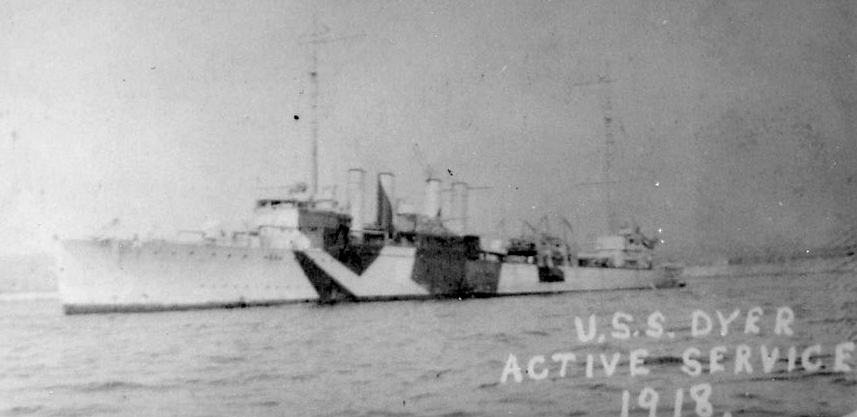
Dyer began operations underway on 4 August 1918. Three days, later she received orders to escort U.S. Army Transport (USAT) Virginian and Santa Olivia (Id. No. 3125) to Marseilles. The destroyer was also charged with reporting to the Port Convoy Officer upon her arrival to inform him that the ship could escort any U.S. Army transports back to Gibraltar. Getting underway on 8 August, they reached on the 11th. Dyer departed Marseilles in company with Floridian (Id. No. 3875) and the tanker Woonsocket and stood in to Gibraltar on 15 August. On 29 August, she escorted K. I. Luckenbach (Id. No. 2291) and Santa Cecilia (Id. No. 4008) out of Gibraltar, bound for Marseilles, where they reached without incident on 1 September.
Ten days later, during which time Dyer had escorted a convoy to Marseilles, Rear Adm. Niblack dispatched a cablegram to both the offices of Vice Adm. William S. Sims, Commander, U.S. Naval Forces in European Waters at Grosvenor in London (SIMSADUS) and to Adm. William S. Benson, Chief of Naval Operation (OPNAV), that the new “destroyer allotted to Gibraltar should lose no time reaching this station to relieve the congestion of Army stores ships bound for Marseilles, France, Dyer and Gregory are being over worked.” This caused him, the next day, to delay the dispatch of Woonsocket and Eastern Sun upon their arrival at Gibraltar, as the aforementioned destroyers were not at Gibraltar to conduct the escort. Dyer, therefore, cleared Marseilles on 13 September 1918 without a convoy to make her return to Gibraltar. Having reached the British colony, she stood out again on 18 September, in escort of Arizonan (Id. No. 4245-A) and Cacique (Id. No. 2213) to Marseilles. Clearing the French Riviera again on 22 September, the destroyer convoyed Roepat (Id. No. 2536) westward in to Gibraltar on the 26th. She again cleared Gibraltar escorting a convoy, and having stood in to Marseilles, she departed again for Gibraltar on 1 October. With her return, she rendezvoused with Edward Luckenbach (Id. No. 1662) and the merchantman Medina and departed bound for Marseilles on 5 October. Having arrived at Marseilles without incident, she picked up Santa Paula (Id. No. 1590) and made her return to Gibraltar on 12 October. Two weeks later, on 26 October, Dyer was being moved by the British tug Energetic in the harbor at Gibraltar, when the destroyer collided with HMS Marynthea, resulting in damage to the former. Despite this incident, Dyer was again underway on 27 October. This time she escorted the Swedish vessel Carolina to Marseilles. She made her return to Gibraltar with her final convoy on 11 November, the same day that saw the enacting of the Armistice which ended hostilities.
With war’s end, Dyer spent three weeks in drydock undergoing repairs and overhaul. Afterward, she made three trips across the straits to Algiers, Algeria or Tangier, French Morocco [Morocco], carrying liberty parties and other passengers (22 December 1918-18 January 1919). On 24 January, she steamed to Lisbon, Portugal, in company with the British destroyer HMS Lyra, in response to a reported revolution in the Portuguese capital. Both ships made their return to Gibraltar on 28 January. That same day, Dyer received orders to report to Commander, U.S. Naval Forces, Eastern Mediterranean, at Venice, Italy, for duty. Departing Gibraltar the next day, 29 January, she steamed via Valetta, Malta (31 January-3 February), and made her way to Venice on 5 February. Upon her arrival, she reported to Rear Adm. Niblack, now in command there. Departing a week later on 12 February, she steamed down the Adriatic and called at Spalato, Dalmatia, Kingdom of Serbs, Croats and Slovenes [Croatia]; Cattaro, Kingdom of Serbs, Croats and Slovenes [Montenegro], and Brindisi, Italy; Constantinople [Istanbul], Turkey; and Beirut, Syria [Lebanon], before arriving at Venice, on 7 March.
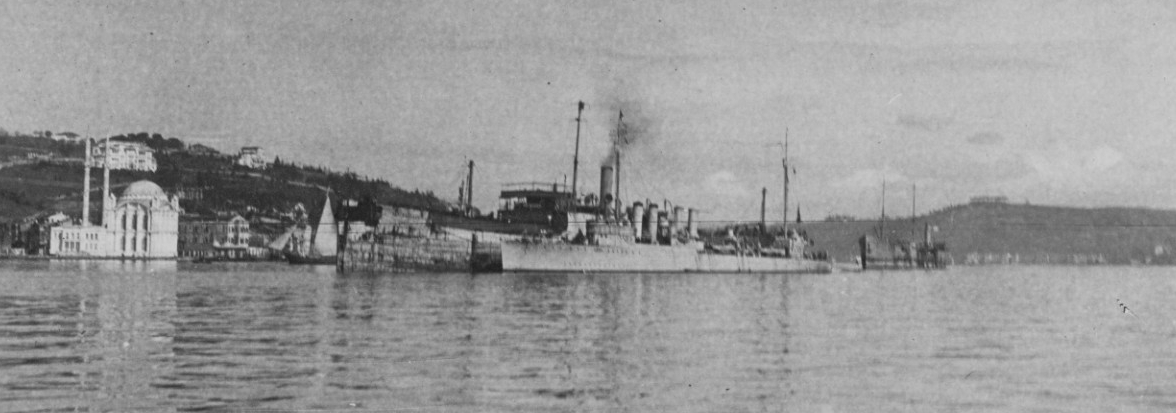
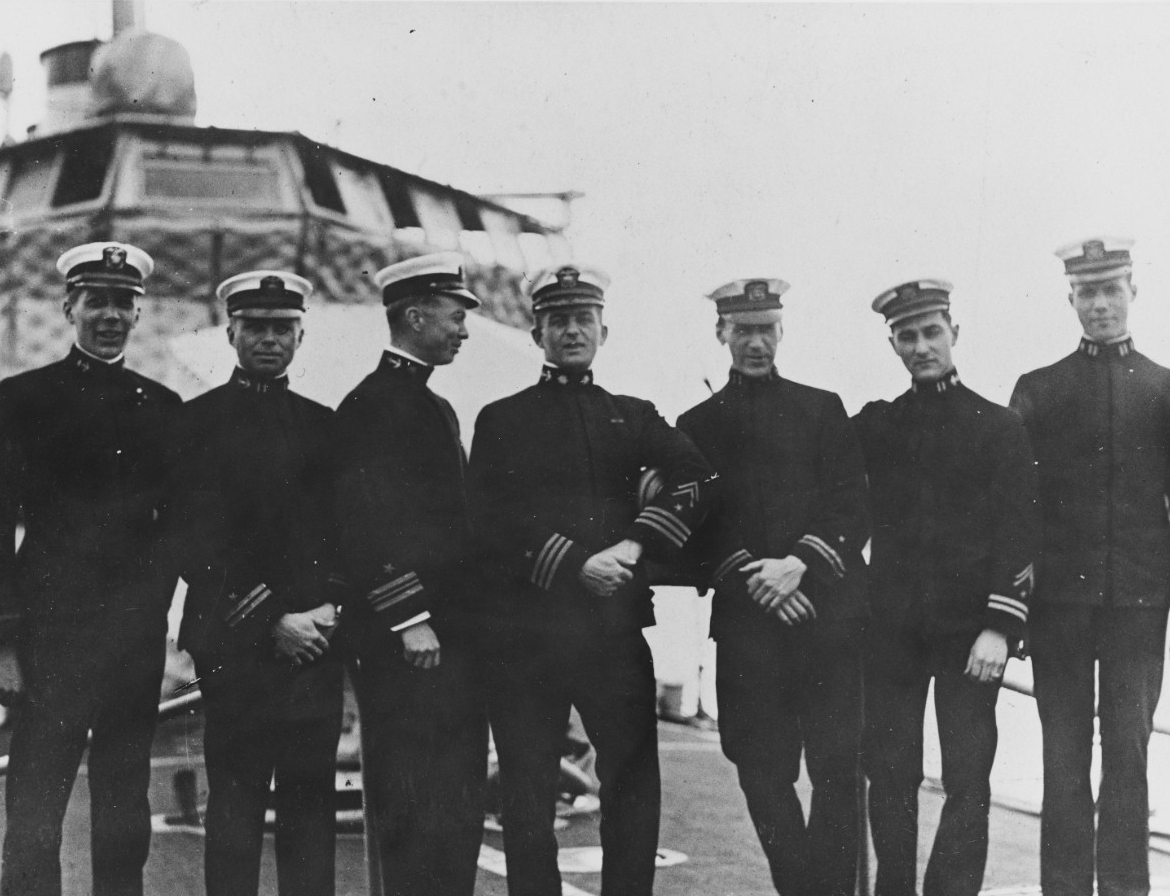
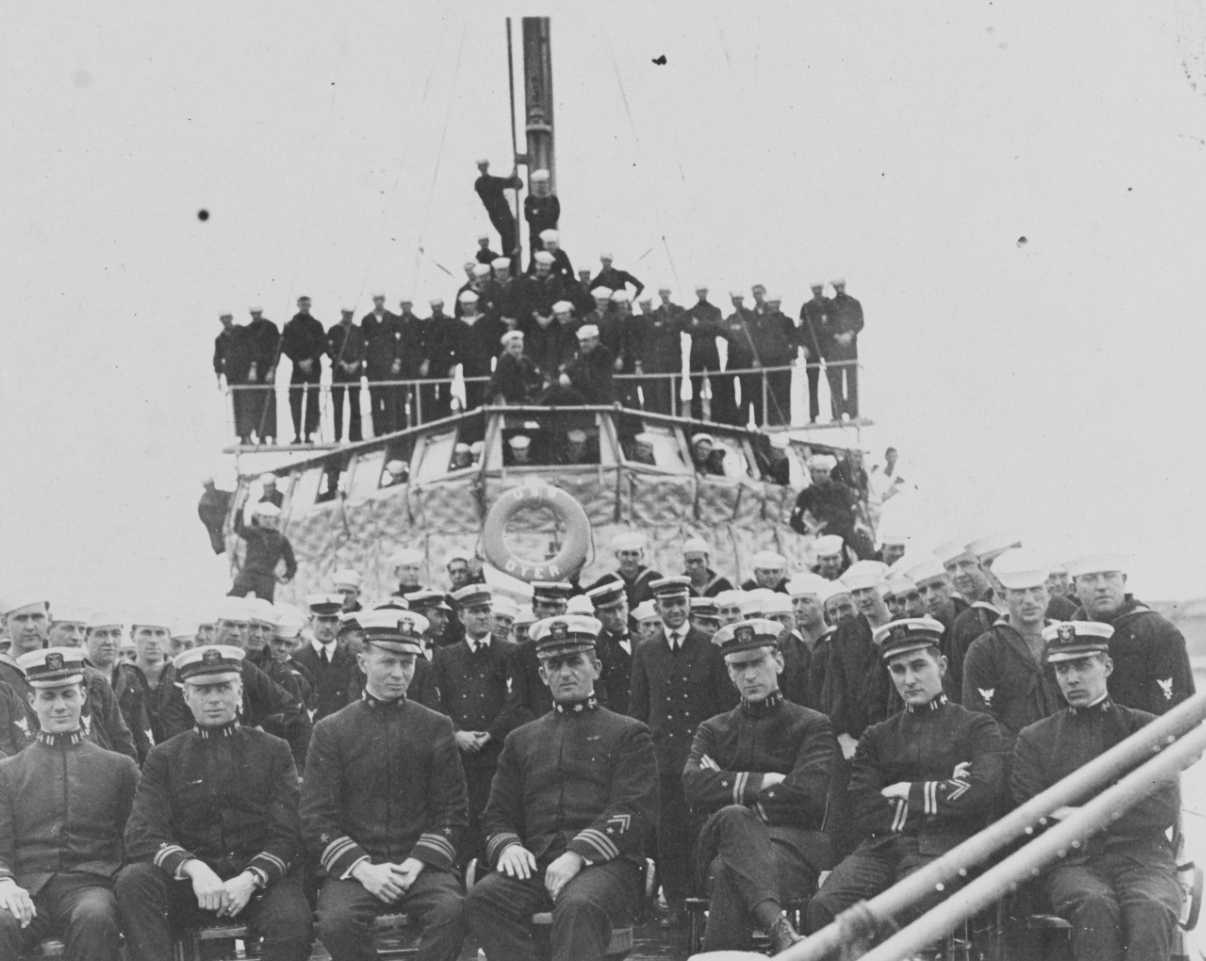
Operating from Venice as the flagship for the force, Dyer engaged in activities in connection with relief agencies, transportation of passengers and supplies in the Adriatic command, and aided in the execution of the terms of the Austrian armistice until 16 April 1919, when she was detached. Dyer departed Spalato on 16 April, and arrived at Gibraltar on 20 April. She then visited Lisbon, Portugal; Smyrna [Izmir], Turkey; Villefranche, France; and returned to Gibraltar on 29 May.
Clearing Gibraltar on 5 June 1919 with two members of Congress embarked, Dyer set out westward in company with Gregory for a return to the U.S. via the Azores. Arriving at Ponta Delgada on 7 June, the destroyers reached New York on 14 June 1919, and moored in the North River anchorage off 96th Street. On 23 June, both destroyers were assigned to Division Six, Squadron Three, Destroyer Force, Atlantic Fleet. On 28 June, she offloaded her ammunition in preparation for docking at the New York Navy Yard for post-deployment overhaul and alterations. Entering the yard on 1 July, her work would be completed on 6 December, but she would remain at the New York Navy Yard afterward. While in the yard, she was placed in reserve with a reduced commission (1 October 1919-31 October 1920). Dyer underwent satisfactory trials and on 8 June 1920, her homeport was re-assigned to the Charleston [S.C.] Navy Yard.
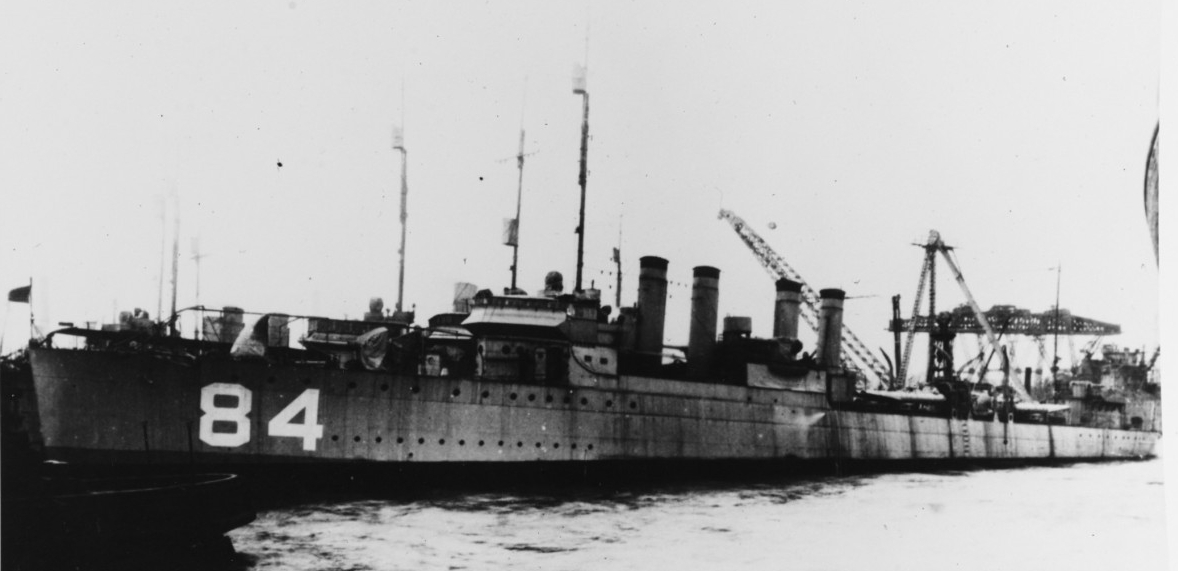
Upon clearing the yard on 12 June 1920, she steamed to Newport, where she arrived the next day. Three days later, on 15 June, she steamed back to the New York Navy Yard, where she remained until 12 August. During this time, on 17 July, the destroyer was re-designated DD-84 as part of a Navy-wide administrative re-organization. Standing out of New York on 13 August, she steamed to the Charleston (S.C.) Navy Yard, where she would serve in her reserve capacity. Operating from Charleston periodically, she was attached to various destroyer squadrons of the Atlantic Fleet for training and operated along the eastern seaboard until 12 October 1921. Returning to Charleston on that day, she remained there until 3 April 1922, when she steamed to the Philadelphia Navy Yard. Arriving that same day, she began undergoing preparations for decommissioning.
Dyer was decommissioned at the Philadelphia Navy Yard on 7 June 1922 and stricken from the Navy list on 7 January 1936. Sold to Boston Iron & Metal Co., Inc., Baltimore, Md., on 8 September for scrapping in accordance with the London Treaty for the Limitation of Naval Armament, she was reduced to a hulk by the purchaser on 25 November.
| Commanding Officers | Dates of Command |
| Cmdr. Fred H. Poteet | 1 July 1918 – 4 August 1919 |
| Lt. Cmdr. William D. Taylor | 4 August 1919 – 9 August 1919 |
| Lt. Isadore Lehrfeld | 9 August 1919 – 9 October 1919 |
| Lt. Jerauld Wright | 9 October 1919 – 24 July 1920 |
| Lt. Armit C. Thomas | 24 July 1920 – 23 August 1920 |
| Ens. Clarence L. Waters | 23 August 1920 – 30 October 1920 |
| Lt. Mark L. Sperry Jr. | 30 October 1920 – 17 November 1920 |
| Lt. Jay K. Allen | 17 November 1920 – 25 April 1921 |
| Ens. John M. Thornton | 25 April 1921 – 14 July 1921 |
| Ens. John G. Doherty | 14 July 1921 – 22 July 1921 |
| Lt. Cmdr. James L. King | 1 August 1921 – 7 June 1922 |
Christopher B. Havern Sr.
1 March 2018


